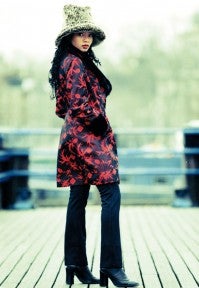John Freeman’s Guide to Telephoto lenses 2
Blu r the background
r the background
Telephoto lenses have a far less depth of field than standard or wideangle lenses. This means that you’ll be able to photograph subjects that are far away from the lens and bring them so that they appear closer and fill the frame. At the same time if you choose a wide aperture, f2.8 for example, the background will become quite blurred. This will make your main subject stand out with greater clarity while the background will become an attractive mottled range of hues. On the other hand, if you want greater depth of field you’ll have to stop the lens down to f16 or f22 and increase the shutter speed. Depending on the focal length of the telephoto that you are using, the shutter speed required might be too long for you to hold the camera steady so you’ll have to use a tripod; unless of course you are using an image-stabilising lens such as my Canon 70-200mm f2.8.
Long telephoto lenses, such as the 300mm I used to create this shot, can isolate the subject against the background. By using a wide aperture, such as f2.8, the area of sharp focus is extremely small and extends only a short way in front of and behind the model.
Useful gear
 EYE FOR DETAIL
EYE FOR DETAIL
Besides bringing distant objects closer,
telephoto lenses are also very useful for cropping out unwanted detail.
For this shot of an inner city tower block I used a 400mm lens which
enabled me to get in tight so that the strong geometrical lines of the building are emphasised.
FILTERS
Haze, caused by ultraviolet radiation, is a bigger problem with longer telephoto lenses. A UV filter will improve clarity.
TRIPOD
Long lenses will need support if you’re to avoid camera shake – and possibly backache. A tripod is ideal.
MONOPOD
Monopods are a good compromise when a tripod is too big to carry. They provide good support but you can’t let go of them!
EXTENDER
Cheaper than buying a super-telephoto lens, extenders increase the focal length by 1.4x or 2x, but with some loss of brightness.
LENSHOOD OR SHADE
Flare is a bigger risk with large front elements, so a lens hood is vital to keep out peripheral light.

Right: With subjects such as sport and wildlife you might find yourself some distance from your subject and have to use an ultra telephoto, such as the 600mm used here. Because of the lens size I used a monopod to keep the equipment steady and avoid camera shake.




